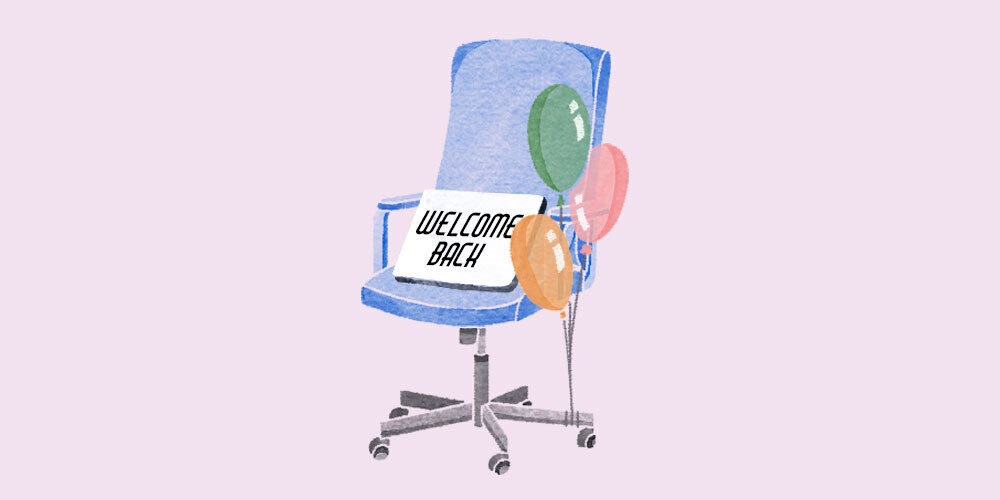Companies are offering return-to-work post-parental leave programs to boost retention

Returning to work after a huge life event — like becoming a parent — is rarely an easy transition. But much of the workforce experiences it at some point in their careers, and employers are starting to offer more support.
An emerging area of interest is around post-parental leave programs, to help those who took extended breaks caring for new children ease back into the workplace. The programs vary but often allow them to work reduced schedules or have limited responsibilities in the months after they return.
It comes as more than 80% of employers are looking to change their leave policies in the next two years, with many looking to boost the amount of time off they’re giving for staff in parental or caregiver leave arrangements, according to a survey from WTW, a workforce intelligence and benefits company, including responses from over 500 employers.
The U.S. is one of few countries in the world without any national paid parental leave laws, meaning the amount of time off new parents get varies greatly depending on their employer, along with the amount of support they get once they return. More generous policies to help workers adjust are appealing to job seekers but also make current staff more likely to stick with the organization and feel a sense of gratitude and loyalty, experts say.
“They actually help employers to retain their employees, so you’re not floundering when you go back,” said Lori Mihalich-Levin, CEO and founder of Mindful Return, an online course and community for new working parents.
Some examples of post-parental leave arrangements at major companies include McKinsey’s “reboarding” program for parents that it piloted in Europe and expanded globally in 2022. The program allows staff to return under a reintegration plan where they phase back into client work, and includes one-on-one support and coaching. The goal is to “ensure returning colleagues can maintain their career growth, rather than having to play catchup.”
Others like tech giant HP offer a parental transition support program allowing new parents to work part-time for up to 36 months after taking parental leave.
Mihalich-Levin is a healthcare regulatory lawyer in Washington, D.C., and after having her second child realized one key support she didn’t receive was any real framework or guidance for how to mentally and logistically return to work.
“I struggled with all the usual things people struggle with, interrupted sleep, guilt, figuring out what my new life looks like, having a daycare that was wonderful but closed at 5:45 [p.m.],” she said.
That drove her to create Mindful Return, an online course companies can offer their staff on parental leave that helps set them up for going back to work. New parents take the four-week course while they are on leave, covering new topics each week like how to mentally and emotionally prepare, how to handle logistics like nursing and childcare, and how to harness new parenting skills into skills that can be useful in the workplace.
The course connects people on parental leave with others at different companies, which also helps build a sense of community and combat feelings of isolation that many new parents experience.
“There’s something very normalizing about being in there with folks who are not just in your company, but from lots of different employers, because then you’re recognizing that this is a human challenge,” she said.
Mindful Return works with a lot of employers in the legal industry, and many are offering phased-return programs, she said. Pay may be slightly reduced or kept full while new parents can work the first month or two back at a 60% schedule, then up to a 80% schedule in the following months, until they’re back to 100%.
“So it’s sort of ramping back up over that first year,” she said. New parents who went through the Mindful Return course and an accompanying phased-back program through their employer reported how helpful the reduced schedules and expectations were, “because then they weren’t feeling as though they had to go whole hog on the very first day,” she said.
Another trend around parental leave is making those benefits available to workers of all genders, and giving equal time off for birthing and non-birthing parents. But maternity leave is still more common than paternity leave in general.
Some 86% of employers provide maternity leave, while 82% provide paternity leave and adoption leave, according to a survey from WTW, a workforce intelligence and benefits company. Within the next two years, about a fifth of those surveyed plan to increase the amount of time off for workers taking parental leave.
Employers in the U.S. traditionally have given maternity leave on the basis that it’s a medical event and birthing parents need time to physically heal. But “what companies are really acknowledging is, aside from the medical aspect, the reality is that your entire life has changed,” said Christy Pruitt-Haynes, distinguished faculty for leadership and performance at NeuroLeadership Institute.
“The way you spend your time has changed, the amount of sleep you’re getting has changed, and where your priorities lie have changed,” Pruitt-Haynes said. Offering support for all new parents “increases the retention of parents who are returning to work because they’re allowed to do so in a way that really acknowledges everything they have going on in their life,” she said.


